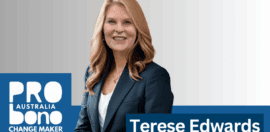Mystery Shopping Exercise Tracks Haiti Donations
22 June 2010 at 10:35 am
Global fundraising agencies Pareto Fundraising, in Australia and Pell & Bales, in the UK have released the findings of a charity ‘mystery shopping’ exercise to track donations to organisations fundraising for the Haiti earthquake disaster.
Following the Haiti earthquake tragedy,they attempted collectively to make donations to 52 actively fundraising organisations in five countries (US, Canada, UK, Spain and Australia). Here's how their mystery shopping exercise unfolded.
The study, conducted from the end of January through to the end of April 2010, looked at the performance of several organisations fundraising for Haiti, and specifically how they responded following donations made online.
On the back of the tragedy that struck Haiti in January, 2010 Pareto Fundraising and Pell & Bales decided to look at how charities were responding to donors who made donations in the wake of the disaster.
The researchers made an online gift around two weeks after the Haiti disaster. The gift made was for the equivalent of $25 USD, to 52 organisations in the US, Canada, the UK, Australia and Spain.
- Initial contact experience. What was the experience like as a donor making the donation?
- Response time. Did they hear back from the charity the same day the gift was made online?
- Value of the ‘thank you’. Was it personal? Did they hear the words ‘thank you’? Was a story shared?
- How proactive the organisation was. Was information shared about how their gift would make a difference? Was regular/monthly giving promoted initially?
- The follow up. Was there ongoing feedback and updates? Were they asked for subsequent donations, and if so were they asked to consider a regular/monthly gift?
Overall, the researchers found that the initial response to the gifts was very good. Most organisations responded to the donation immediately and were genuinely thankful for the donation made.
Whilst the ongoing frequency of communications was regular, and the feedback detailed, they says the element missing was the link to individual stories, and how the donation was having a direct impact. Most of the feedback was operationally focused.
The researchers were asked for another financial contribution several times by some organisations in the subsequent two months, although the huge area of opportunity moving forward definitely lies within regular/monthly giving.
Very few asked them to consider changing the way we support and commence an ongoing, monthly gift.
Here are some of the key findings:
- 83% of charities responded to the donation the same day (with an email confirmation). In the US, Canada and Australia the response came on the same day in 100% of occasions. In the UK 85% of the time, whereas only 30% of Spanish charities responded the same day of the gift. However it is worth noting that 4 of the 10 charities in Spain did not actually process the donation, at all.
- Of all charities that processed the donation (92%), all but three said the words ‘thank you’ within the email received after making the gift. However 10 organisations did not personalize the thank you email (I.e. it did not reference our name personally in the salutation or the body of the email).
- Only 29% of charities initially promoted regular/monthly giving. The highest of the countries was the US where 55% of charities mystery shopped asked for an ongoing commitment.
- In the follow up activity, after the first gift, 21% of organisations used vehicles other than email to communicate with us. Of the 52 charities we surveyed, only 2 (both in the UK) used a combination of email, mail and telephone to keep in touch and communicate with us. 31% of charities across the countries did not reach out to us at all after the initial thank you process.
Pareto and Pell & Bales have provided some recommendations for organisations responding to disasters, related to both the initial period after a disaster, and in the weeks and months following.
In the Initial contact
-
Charities need to ensure that initial donations receive a speedy response either by auto
response or within a short space of time (response in hours, not days). - Initial responses should be personalised and should contain the words ’thank you’.
- When landing on a charity's website, the disaster should be prominently displayed, with its own separate landing page. All email communications should provide a link straight to that landing page (or micro site).
- If the organization is strategically focusing on regular/monthly gifts, the initial response should promote this and keep it singularly focused.
Subsequent contact
- Subsequent communications need to be relevant and timely, providing useful and important updates and information demonstrating the impact the donor’s money is having on the ground. That means telling real, human stories.
- Real feedback from the field should be provided on a regular basis, in a coherent manner. We should foster opportunities for deeper engagement and understanding of the issues at hand.
- Stand out from the crowd. Some of the best examples from this exercise on how to feedback involved inviting donors to teleconferences and webinars to share stories from the field.
Conversion to Regular/Monthly Giving
- Charities should develop and execute a follow up communication plan as part of an integrated strategy to convert onetime cash supporters onto regular/monthly giving.
- All communications should focus on capturing details to make conversion to monthly giving easier e.g. Name, address, phone number and email. Offer opt outs rather than opt in to follow up contact.
- Constant reinforcement in all communications of the importance and need for regular/monthly giving (linked to the need for long term, sustainable support to the people affected).
- Develop integrated channel plan for conversion to monthly giving including email promotion/reinforcement, telephone conversion and mail mop up activity.
- Aim to make direct approach to conversion onto regular/monthly giving within 2 months of first cash gift. Speed is key. We know that 2 months is better than 4 months, and so on.
- Evaluate the impact of developing a specific regular/monthly giving product for the emergency situation (I.e. sign up for 365 days) along with a well thought out plan for future relationship management and donor care.
- Once signed up to a regular/monthly gift, focus on the honeymoon period: the first 30 days after sign up. This is critical to arresting attrition.
Long term strategy
- Develop a plan for communicating with non-responders to your regular/monthly giving conversion efforts. Consider how to feed these individuals into the ongoing cash program and look at ways to engage with non financial support. Test using as a prospect file for future conversion activity.
- Ensure your organization is well equipped to for the next emergency response. For example, mail and email templates in place, thanking and conversion process agreed.
For more information www.paretofundraising.com







